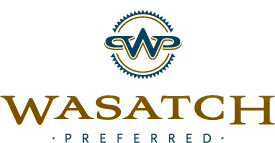Fed-OSHA is getting closer to releasing proposed language for a heat illness prevention standard.
Text of the proposal, sent in mid-June to the White House’s Office of Information and Regulatory Affairs, hasn’t been made public.
As our summers get hotter and more parts of the country regularly battle sweltering heat waves, it’s imperative that employers take steps to protect their outdoor workers.
No part of the nation is immune from the ravages of extreme heat, and while it’s all relative, people who are not acclimated to high heat conditions can easily suffer heat illness, which can be deadly.
Between 2011 and 2021, there were 436 work-related deaths caused by environmental heat exposure, according to the Bureau of Labor Statistics. In 2022, there were 43 work-related fatalities, up from 36 in 2021, but down from 56 in 2020.
These statistics, the most recently available, do not account for the thousands of workers who suffer from heat illness that does not result in death.
Fed-OSHA in 2021 published an advance notice of proposed rulemaking for heat injury and illness prevention for both outdoor and indoor workers. While the proposed language has not yet been introduced, it likely will shortly be so after the White House office review.
It should be noted that OSHA previously said protection mandates would kick in any time the heat index reaches 80 degrees Fahrenheit.
The proposed standard will likely be similar to what the agency recommends on a section of its website dedicated to heat illness prevention, which contains a number of resources, including a manual for preparing a prevention plan, and training documents and information for workers. Here’s what it recommends.
Planning and training
To ensure an organized approach, you should start by putting a prevention plan together and designating someone in your organization to be in charge of it. They should be trained in heat hazards, heat illness symptoms and heat controls.
If possible, select or train multiple people in order to always have a designated heat safety representative on-site.
Workers should be trained on heat illness risks, symptoms and response procedures, as well as prevention methods. Train workers in a language and format they understand.
Acclimatization
Nearly three out of every four fatalities from heat illness occur in the first week of work.
Allow new or returning workers to gradually increase duration of exposure and take more frequent breaks during the first week of work as they build a tolerance to working in the heat.
Designate a shaded break area with water
Designate a shady or cool area for breaks and provide cool drinking water. Natural shade like under trees is best, but portable tents and shelters can be used in areas without natural shade. Break areas and water should be located near work areas so that they can be reached quickly.
Ensure clean drinking water is available and accessible and encourage workers to drink 1 liter per hour (about one cup every 15 to 20 minutes).
Modify work schedules
You can modify schedules to address heat risks, like:
- Rescheduling non-essential outdoor or indoor work to days with a reduced heat index.
- Shifting physically demanding work to cooler times of the day.
- Rotating workers, adding extra workers, or splitting shifts to reduce exposure to heat and ease workloads.
- Stopping work if needed due to heat risk.
Monitor for heat illness symptoms
Establish a monitoring system for the signs and symptoms of heat illness. Also train workers to
monitor each other. A buddy system can help supervisors watch for signs of heat illness.
Workers should dress for the heat
Workers should wear a hat outside and loose-fitting, breathable clothing where possible.
Emergency response procedures
Have an emergency plan in place for each worksite that includes:
- What to do when someone is showing signs of heat illness.
- How to contact emergency services.
- How long it takes for emergency services to arrive.
- Appropriate first aid measures until medical help arrives.
The symptoms of heat illness will intensify with time if actions are not taken to hydrate, rest and cool down. If not treated promptly, minor symptoms of heat illness could quickly lead to a life-or-death situation.
The following are signs of a medical emergency:
- Abnormal thinking or behavior
- Slurred speech
- Seizures
- Fainting
- Heavy sweating or hot, dry skin.
If a worker is experiencing any of the above, you should:
- Call 911 immediately.
- Move them to a cooler area.
- Provide cool water to drink.
- Remove unnecessary clothing.
- Cool with water, ice or a fan.
- Not leave them alone.
- Provide medical care until emergency responders arrive.
The takeaway
Heat illness is no joke. It’s deadly and can quickly spiral out of control. If you have outdoor workers and do not already have a heat illness prevention plan, you should create one immediately. The consequences are too great in our increasingly hotter summers.
